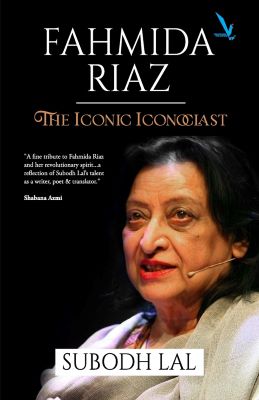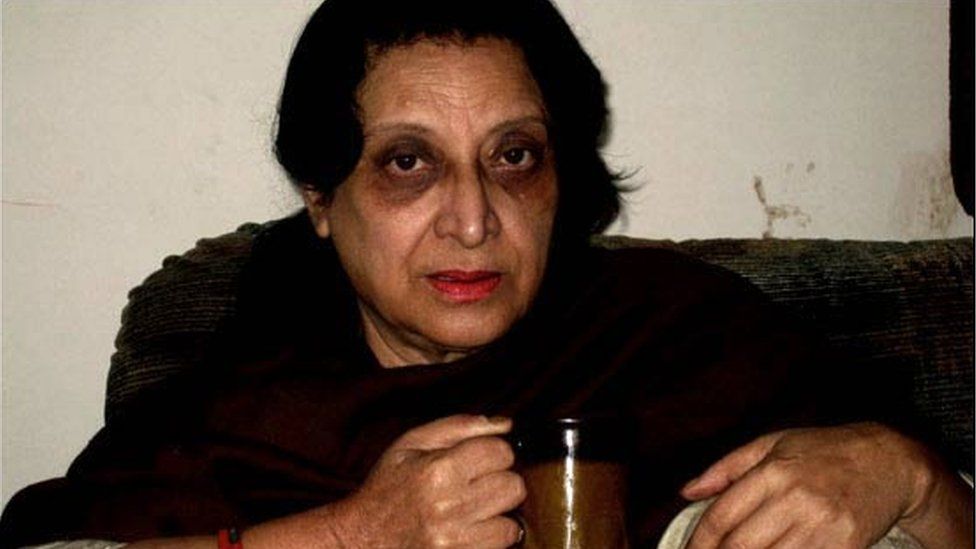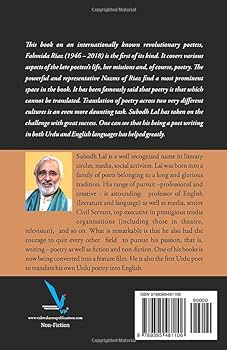
An illuminating new book presents Urdu poet Fahmida Riaz’s stirring attempts to seek an identity in a world of male desire
By Shafey Kidwai
Urdu poetry seldom goes beyond the reductive vision of women in classical imagery and decorous rhymes. The anguish and despair of a woman seeking solace from gender inequities and exploring her identity in a world beset by male desire rarely translates into an astonishing burst of creativity. Few Urdu poets have derided the tendency to reduce women to objects of beauty to be confined to the domestic sphere. Nor have they attempted to portray the multiple identities of this “exotic creature”. To do so requires a lengthy meditation on personal, artistic and sexual freedom. Prominent Urdu poet, Fahmida Riaz (1946-2018), however, does just this in Muqaablaa-e-Husn (Beauty Contest), one of her most widely acclaimed poems.
“What if my hips gyrate?
There is, in my head, curiosity too;
And a heart inside my chest. Beyond these is my real worth!
But do not turn back daunted
Having measured all these
Do measure one of your parts, too!” (Translation by Subodh Lal).
 Here, the poet satirizes the licentious “beauty contest” that betrays the pretensions of a patriarchal society. Hers is not a grieving or over sentimental female voice. What’s conveyed is the idea that more than a site of voyeuristic pleasure, moments of titillation can evoke a sense of introspection.
Here, the poet satirizes the licentious “beauty contest” that betrays the pretensions of a patriarchal society. Hers is not a grieving or over sentimental female voice. What’s conveyed is the idea that more than a site of voyeuristic pleasure, moments of titillation can evoke a sense of introspection.
 Riaz’s gaze encompasses society in its entirety and tells the occasional tale of a woman who remains the docile object of desire even as she oscillates between despair, angst, the sublime, and elation. Creating a nuanced soundscape of the agony of Eros and locating it within the broader spectrum of political injustices, gender inequities and universal ontological questions, Riaz activates a gripping narrative of creative feminine power. This is what is impeccably showcased by poet and exacting translator Subodh Lal in his illuminating new book, Fahmida Riaz: The Iconic Iconoclast.
Riaz’s gaze encompasses society in its entirety and tells the occasional tale of a woman who remains the docile object of desire even as she oscillates between despair, angst, the sublime, and elation. Creating a nuanced soundscape of the agony of Eros and locating it within the broader spectrum of political injustices, gender inequities and universal ontological questions, Riaz activates a gripping narrative of creative feminine power. This is what is impeccably showcased by poet and exacting translator Subodh Lal in his illuminating new book, Fahmida Riaz: The Iconic Iconoclast.
Divided into six evenly-matched chapters, the text presents a poet who juxtaposes female desire, the rhetoric of defiance, imprisonment, and shame with the impediments of life to a much wider non Urdu-speaking public. A contemporary of both Sylvia Plath (1932-1962) and Forough Farrokhzad (1934-1967), Riaz’s poetry evokes a strong sense of transcendence.
She often refuted the singularized narrative of women’s oppression, and Lal aptly delineates how she did it: “Feminism was not a populist mission for Fahmida. It was based on her observations and experiences and her poetic sensitivity, which could transform the personal to universal and vice versa. For her, feminism meant that women and men needed to be treated like equals since women, too, are complete human beings capable of achieving whatever man could. Therefore, their treatment as inferior humans needed to be fought against. The mission is to make women aware of their true potential and power”:
You are that woman awake
Whose pain is aflame
Whose voice is eloquent
Arms empowered
Fingers artistic
Passion unbridled
Pleasure uninhibited
Knowing, too-what love is
And what is ecstasy. Mother of divinity
Beloved of man. (To A Girl; trans. Subodh Lal).
Riaz’s poems are often both reviled and revered for celebrating female desire – something she does with distinctive frankness and elegance. She is critical too of social segregation costumed as a normative cultural practice or as a divine commandment. The reductive and repressive vision of womanhood irritates her and in her poetry, it is presented as a troupe of intoxication leading to blindness and silence:
Why, sir, this black chador for me?
Why, your kindness, this reward for me?
In mourning, I am not to wear this veil/ (Or)
To announce my grief to the world
Nor am I disease needed to be hidden in darkness.
A sinner or a criminal I am not
To carry this stamp of gloom on my brow. (The Veil and the Four Walls; trans. Subodh Lal)
The fragility of the imagined quest for a prelapsarian state, for artistic and sexual freedom and truth leads her to contest WH Auden:
True it is, my thinker,
My poet
That time is here (when)
Tugging at the robes of old, misleading teachers
Today’s youth will say
”Change these books
These books that tell lies
Which you have been teaching us;
Remove hollow, obsolete words to reveal reality”
For we know that
Truth and Lie are forever at war
(And) lie always wins;
For hate is eternal
And Satan greater than the stupid god of righteousness.
In her oeuvre, intense sensual yearning intriguingly fetches something other than what is searched for:
The love that I yearned for
Was not a heavenly odd colorful bird
But a primaeval blind demon
That has entered (my) body
Moving along the walls
Caressing with fleshy cold palms
Feeling me with soiled, icy hands/ Breathing down warmly, day and night.
As a revolutionary practitioner known across transnational poetic spaces, Fahimda Riaz reinvented classical imagery and quotidian words to create a deeply felt sonic ambience. And this is what Subodh Lal manages to skillfully convey in English. In sum, Shabana Azmi is right in describing Fahmida Riaz: The Iconic Iconoclast as a fine tribute to the poet and her revolutionary spirit.
__________________
Shafey Kidwai, a bilingual critic, is a professor of Mass Communication at Aligarh Muslim University.
Courtesy: Hindustan Times (Posted on Nov. 30, 2023)
[…] Also read: Review: Fahmida Riaz: The Iconic Iconoclast by Subodh Lal […]